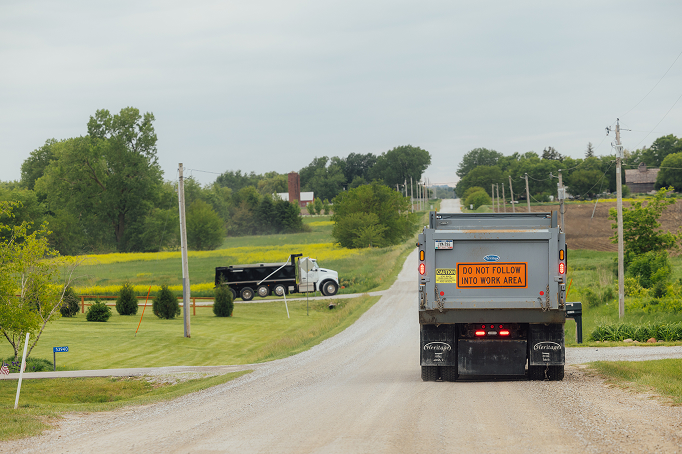We deliver the right base materials for concrete pads — ensuring strength, drainage, and long-term stability beneath every slab you pour.
To build a durable and stable concrete pad base, you’ll generally need these key materials — each playing a specific role in ensuring your slab’s longevity and performance:
This is the base layer used to level and fill the area after any unsuitable topsoil or debris is removed. It creates a firm, even surface to support the heavier layers above. Proper compaction of fill dirt is essential to prevent settling or sinking over time.
This is the base layer used to level and fill the area after any unsuitable topsoil or debris is removed. It creates a firm, even surface to support the heavier layers above. Proper compaction of fill dirt is essential to prevent settling or sinking over time.
Typically applied in a layer 4 to 8 inches thick, gravel or crushed stone serves multiple purposes. It enhances drainage by allowing water to pass through, preventing pooling under the slab. Additionally, it provides structural support by distributing weight evenly and reducing soil movement that could cause cracks or shifts in the concrete.
Often used as a final leveling layer, sand or fine aggregate fills in small voids and smooths the surface before the concrete is poured. This helps achieve a more uniform slab thickness and improves bonding between the concrete and base layers. While optional, it can increase the overall durability of your concrete pad.
Our hauling service delivers these essential materials directly to your site, in the quantities tailored to your project’s size and specifications, so you can keep your project moving forward without delays.
Choose the materials you need — we’ll provide a fast, reliable estimate to keep your concrete pad project moving forward.
A well-built base:

Prevents cracks caused by soil movement or settling.

Supports heavy loads from vehicles or structures.

Improves drainage to protect your concrete slab from water damage.

Increases the lifespan of patios, driveways, garage floors, and more.
Trusting professionals who know local soil and material needs means fewer headaches and a stronger finished project.
Let us help you determine the exact materials and quantities for your project — so you get the best results without guesswork.

Typically, 4 to 8 inches of gravel or crushed stone is recommended, depending on soil type and project size.
Typically, 4 to 8 inches of gravel or crushed stone is recommended, depending on soil type and project size.
Sand is optional but beneficial for leveling and smoothing the base surface before pouring concrete.
Yes, we haul materials for projects big or small and deliver them in the quantities you specify.

Since 1978, we’ve hauled with pride.